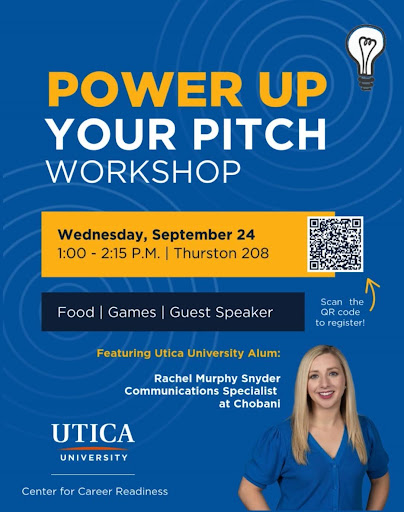Amanda Paladino, Features Editor
Artist Carolynne Whitefeather has found an innovative and unprecedented way to examine the Earth and art itself.
Her Ee Wai Earth Water exhibit is currently being held in the Barret Art Gallery on campus, a timely display as April marks Earth month. Her paintings and fine art digital prints will be available for students to view through April 30th, Mondays through Fridays from 1-5p.m. and Saturdays from noon until 3p.m.
Whitefeather is breaking the mold of traditional viewing of art through the use of convenient QR and NFC tags placed with each piece as opposed to written summaries. Through using smart phones to quickly scan these codes, students are instantly brought to documents providing descriptions, background summaries, additional links to information, resources and even statistics that further explain each piece. This allows students to focus on what’s in front of them without distraction. Students who have been assigned projects for various classes can also take advantage of this feature, which allows them to save all the documents to their phones.
“You get to just see the art and enjoy it,” Whitefeather said, acknowledging the burden of taking notes while trying to observe.
Yet, the means of viewing and learning about Whitefeather’s art isn’t the only thing that’s innovative, as her photographs exceed boundaries of tradition. She speaks fluently through a language of visuals, creating a combination of science and technology to produce printmaking art. Whitefeather also produces paintings using inks from printing.
Through her art, Whitefeather explores nature in its purest form.
“I… create images that are storytelling adventures into the time and places where humans learned from nature and were in balance with their natural world,” Whitefeather said.
As a child, her backyard was Florida’s Wakulla Springs State Park, the world’s largest and deepest freshwater spring that flows at an average of 300 million gallons per day. This ignited her passion for the natural world’s appeal at a young age.
Her photography is entirely raw, as the beauty of Whitefeather’s art untouched by editing mirrors the beauty of Earth’s water untouched by pollution.
“It’s just what it is. When water is without chemicals and pollutions, you can see how clear it can be,” Whitefeather said. “If you go to the right places, you don’t need to saturate or edit. Look at how beautiful the world is- we don’t need to do all of that crap. It’s just there.”
As her career has developed, Whitefeather learned the potential for greatness through curiosity. Her travels have brought her to various areas, including Hawaii and Albania, where her work becomes more of an exploration. By observing things she wants to know more about and implementing the use of her digital camera, Whitefeather captures images that reveal more about the natural world than could ever be imagined by even professional artists.
Whitefeather recalled a summer day at home spent with her dog, Blu, on the dock of Wakulla springs where manatees often swim. Blu displayed his astonishing ability for interspecies relationships as he laid there and touched noses with a manatee in a friendly exchange.
“Imagine what it takes for those two, who are completely different, to trust enough to satisfy their curiosity,” Whitefeather said. “They’re showing us that that’s possible, so why don’t we do it more?”
Whitefeather’s hope is that students take interest to the Earth Water exhibit for a myriad of reasons; whether it be image art, light, physics, chemistry, Earth month, or even our sheer survival, as the pieces take a stance against the devastating pollution that has become commonplace in today’s society.
The exhibit reminds UC students how important it is to remain curious; allowing us to learn more about art and become inspired, to create it, to make a statement, or to ignite change.
“You’ll develop passions for things if you go out, explore, and experiment,” Whitefeather said. “What’s the worst that could happen? You get a lousy picture?”



































































































































